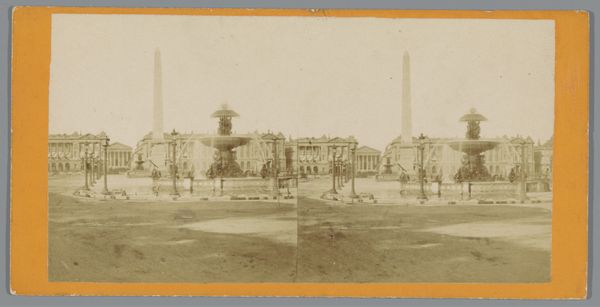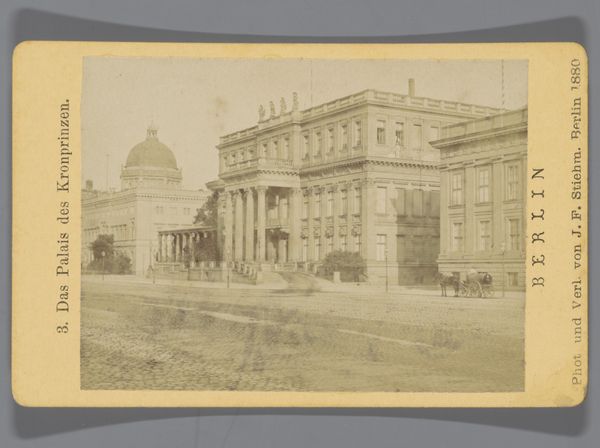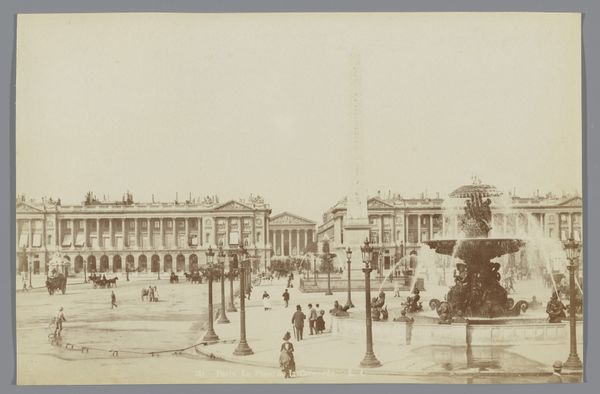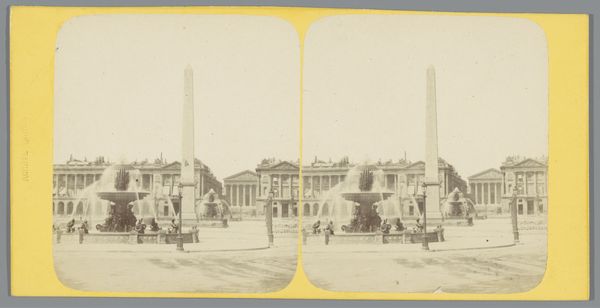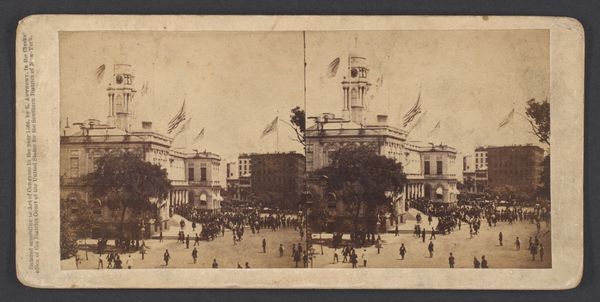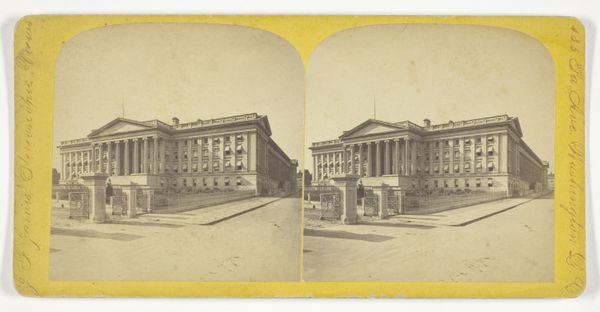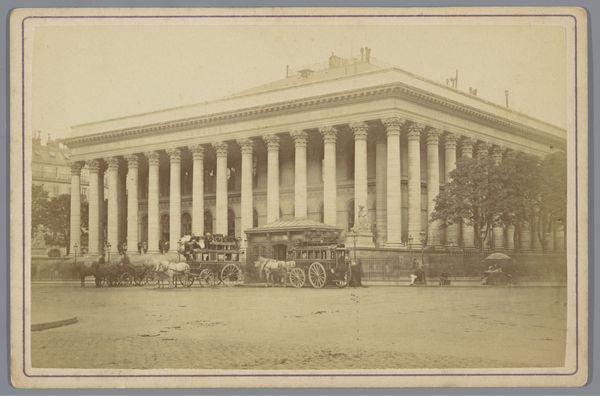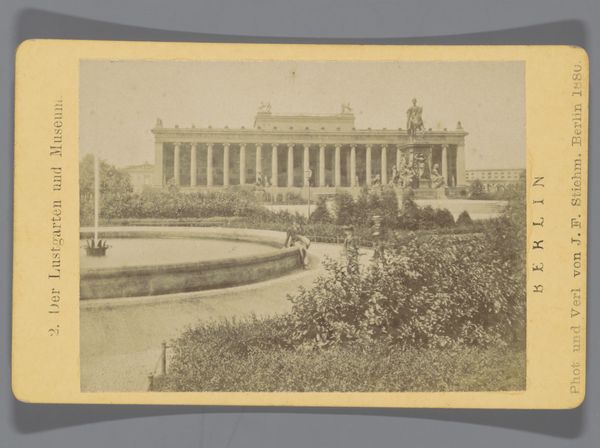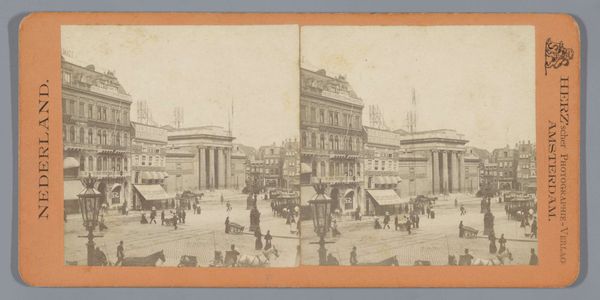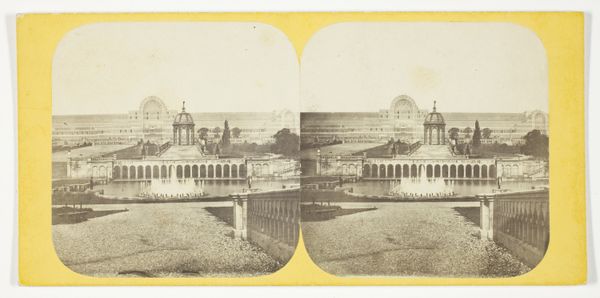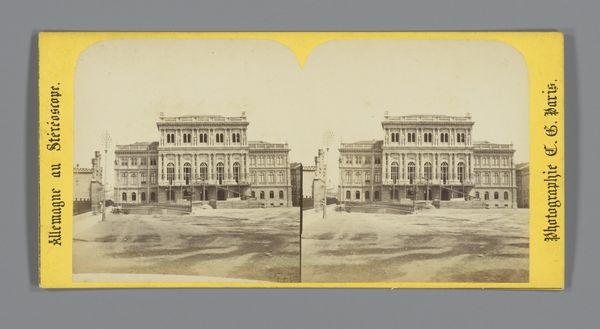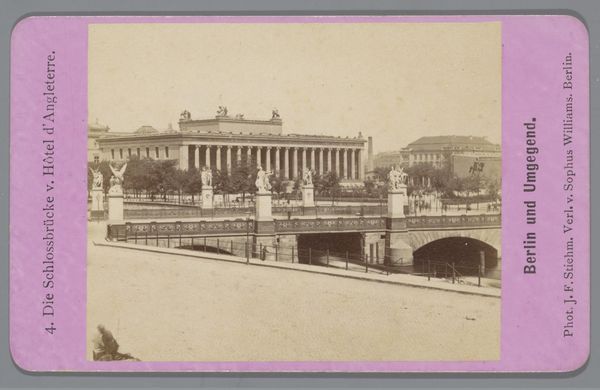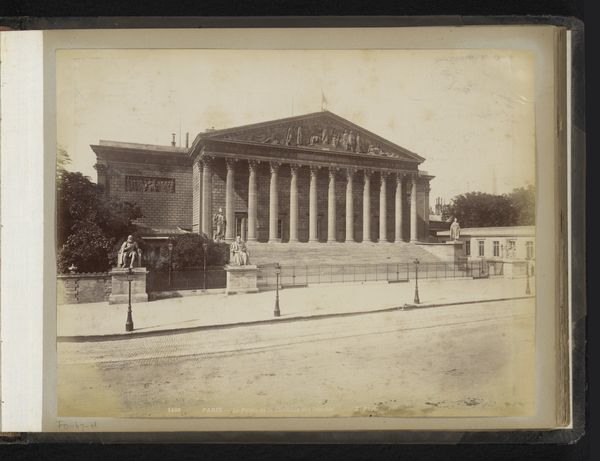
Gezicht op Place de la Concorde in Parijs met een fontein en de Luxor obelisk c. 1850 - 1880
0:00
0:00
Dimensions: height 88 mm, width 177 mm
Copyright: Rijks Museum: Open Domain
Curator: What a fascinating albumen print! Dating back to somewhere between 1850 and 1880, it captures a "View of the Place de la Concorde in Paris with a Fountain and the Luxor Obelisk". It's by the studio of P.L. Editor: Immediately, I'm struck by the almost eerie stillness, especially for a city scene. The monochrome palette mutes the bustling energy I associate with Paris, instead highlighting these strong vertical lines of the obelisk and fountain. It’s interesting that, even in the distance, one can easily follow the structural lines that converge. Curator: The Place de la Concorde holds a powerful significance in French history. Originally named Place Louis XV, it was later the site of Louis XVI's execution during the French Revolution. Renaming it to Place de la Concorde signified a yearning for unity. So, that stark emptiness speaks volumes about power and shifting political climates. The decision to immortalize the square as a scene for stereo viewers indicates the rise of photography as a documentary source, not merely for portraits. Editor: Absolutely, I also think the photographer is subtly playing with spatial depth, how he manages to bring the far away structure into harmony by using this type of long shot. The slightly muted effect flattens everything visually so each object comes into the visual plain seamlessly, further playing on these spatial relationships that the viewer picks up. The fountains become like echoes to the obelisk as they mirror each others scale. Curator: And think about the obelisk itself! It’s literally a monument that embodies thousands of years of history, appropriated from Egypt and set in the heart of revolutionary France. The presence of the Luxor Obelisk makes me consider themes of colonialism, cultural appropriation, and the ways in which power is visually asserted within the urban landscape. This one snapshot captures such layered history and social tension, doesn’t it? Editor: You're right, it’s less about the photograph, or more what that photograph holds within. The way each component, line, structure converges into this very intricate harmony of visuals. Thank you, that brought a whole different level to what my eyes can see. Curator: Absolutely, its layers of history and construction of form are amazing.
Comments
No comments
Be the first to comment and join the conversation on the ultimate creative platform.
